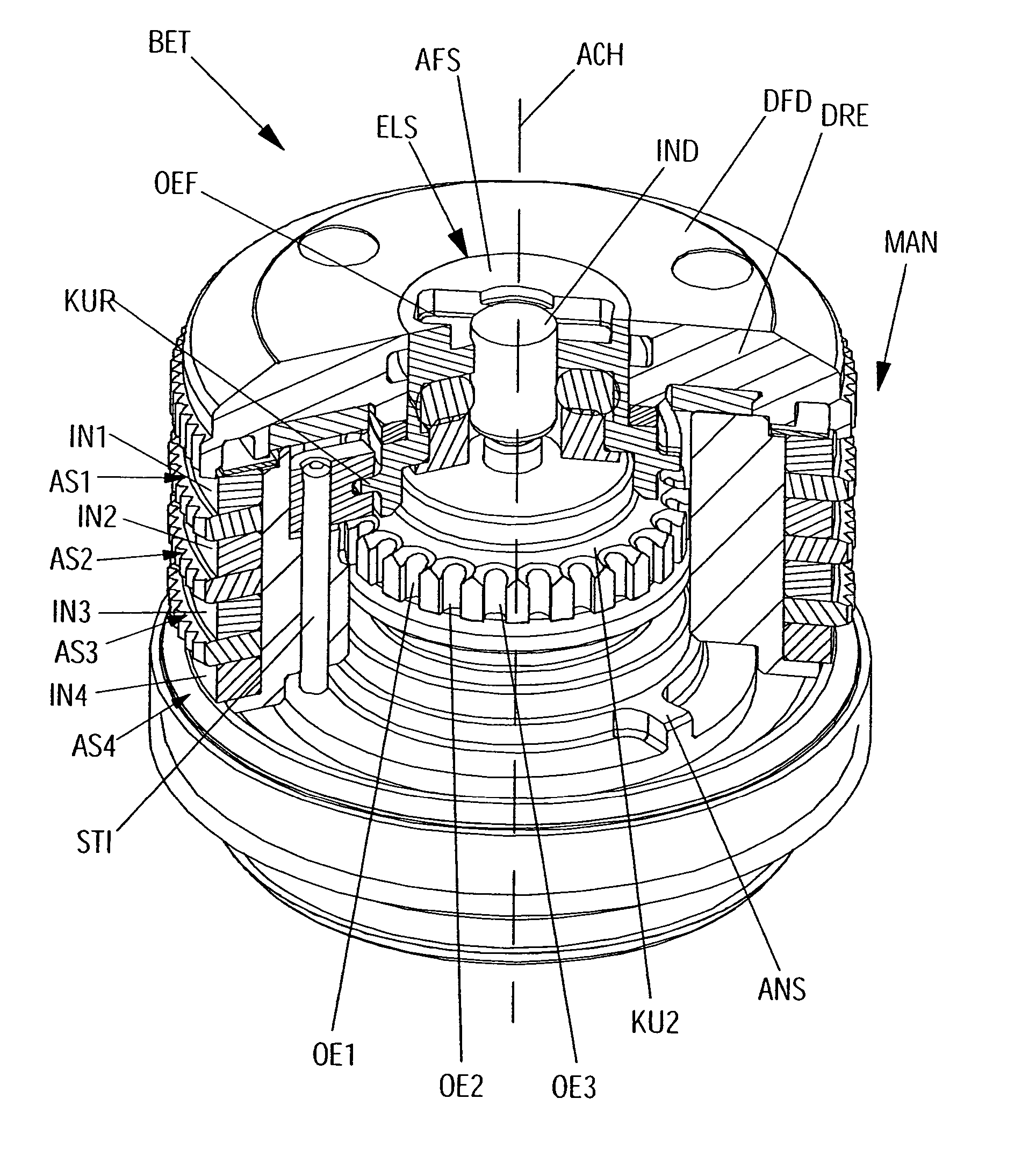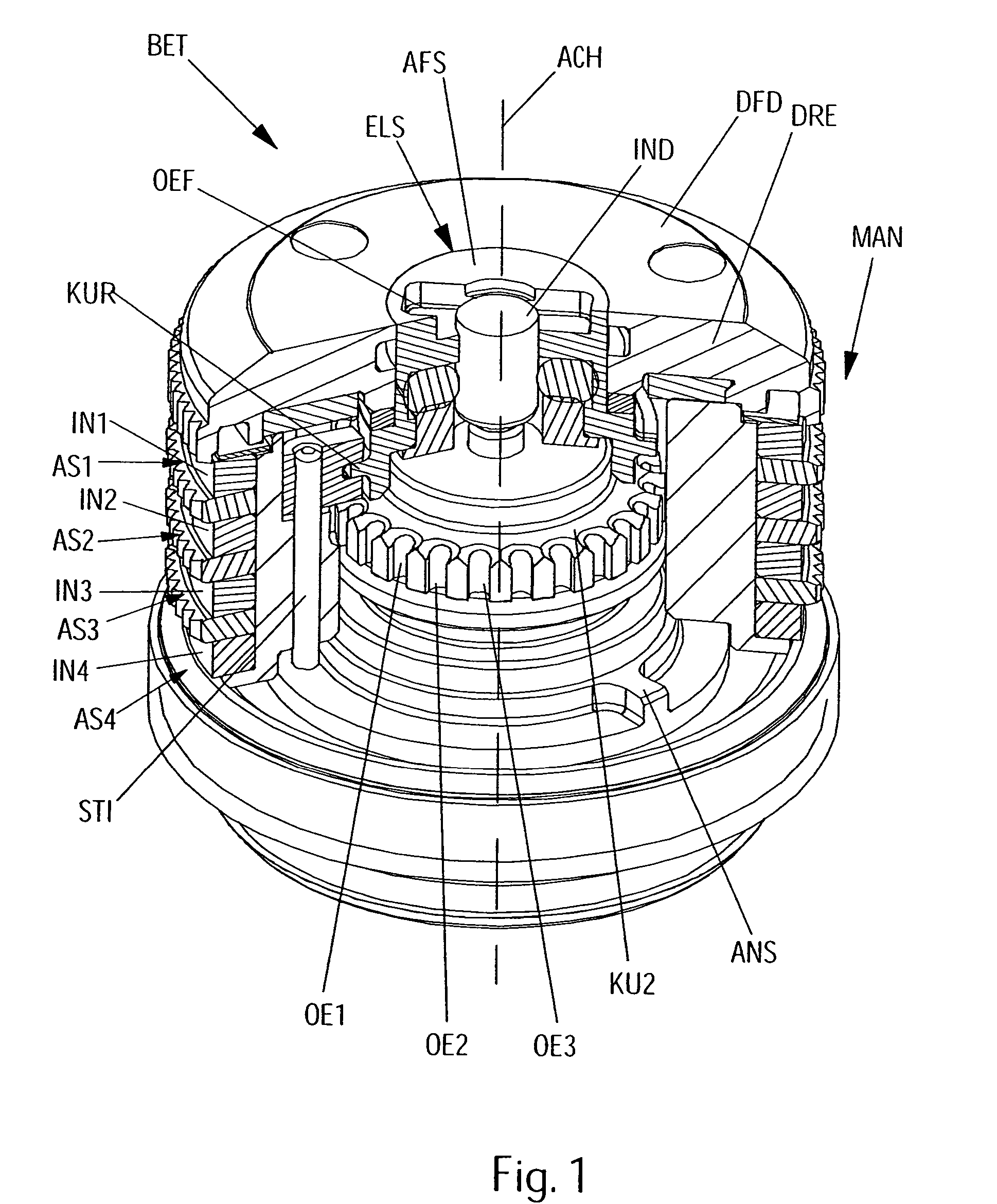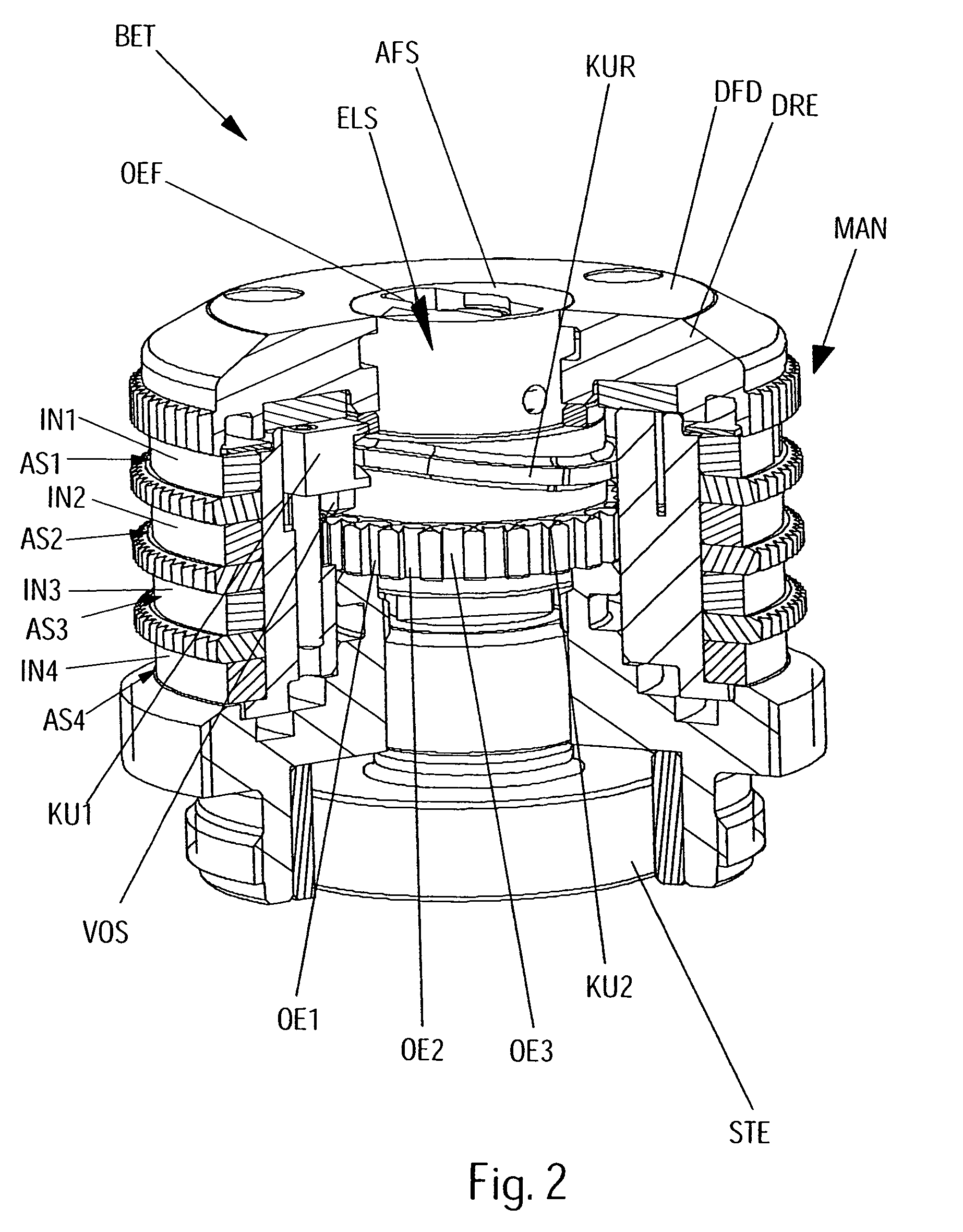Actuating element for a telescopic sight
a technology of actuating elements and telescopic sights, applied in the field of actuators, can solve the problems of screw loss, relatively complicated procedure of loosening, turning and subsequently tightening screws, and the solution has some drawbacks
- Summary
- Abstract
- Description
- Claims
- Application Information
AI Technical Summary
Benefits of technology
Problems solved by technology
Method used
Image
Examples
Embodiment Construction
[0069]The invention described in this document relates to the positioning of a limit stop as well as to the definition of an adjustment range for a lead mark. Such adjustment, etc. is of particular advantage in connection with an actuator that permits indexing of the lead mark and, in particular, multiple indexing. The invention is therefore described below in more detail with reference to a specific actuator that permits multiple indexing. It may be pointed out, however, that the invention is also suitable for other actuators with multiple indexing or even for those that do not permit multiple indexing.
[0070]With the actuator shown, however, it is an advantage that the appropriate mechanism according to the invention can be particularly well accommodated in the rotary knob because of its special design.
[0071]The actuator BET shown consists, as can be seen in particular in FIGS. 1-4, in known manner, of, for instance, a rotary knob DRE that, when turned about its axis of rotation AC...
PUM
 Login to View More
Login to View More Abstract
Description
Claims
Application Information
 Login to View More
Login to View More - R&D
- Intellectual Property
- Life Sciences
- Materials
- Tech Scout
- Unparalleled Data Quality
- Higher Quality Content
- 60% Fewer Hallucinations
Browse by: Latest US Patents, China's latest patents, Technical Efficacy Thesaurus, Application Domain, Technology Topic, Popular Technical Reports.
© 2025 PatSnap. All rights reserved.Legal|Privacy policy|Modern Slavery Act Transparency Statement|Sitemap|About US| Contact US: help@patsnap.com



